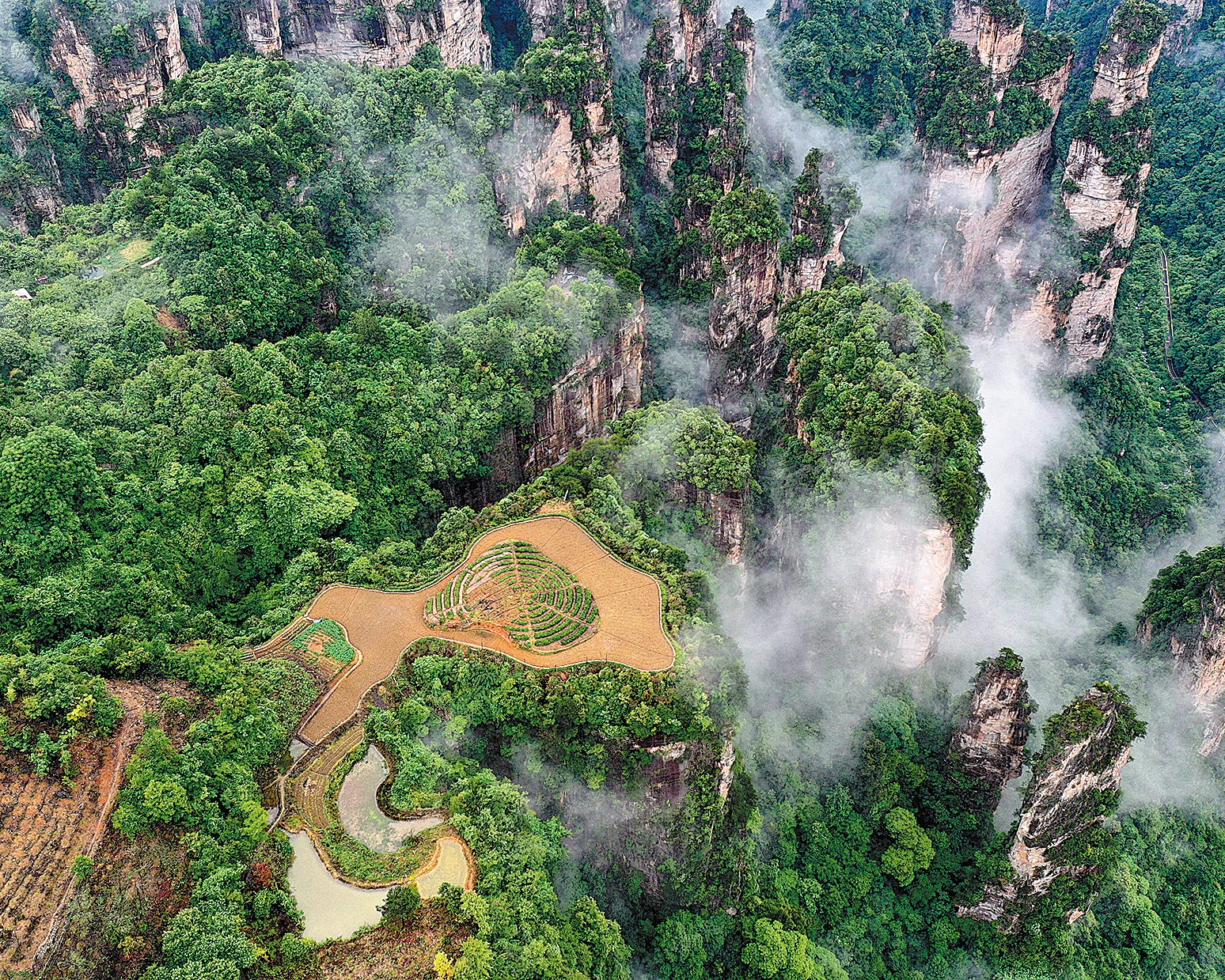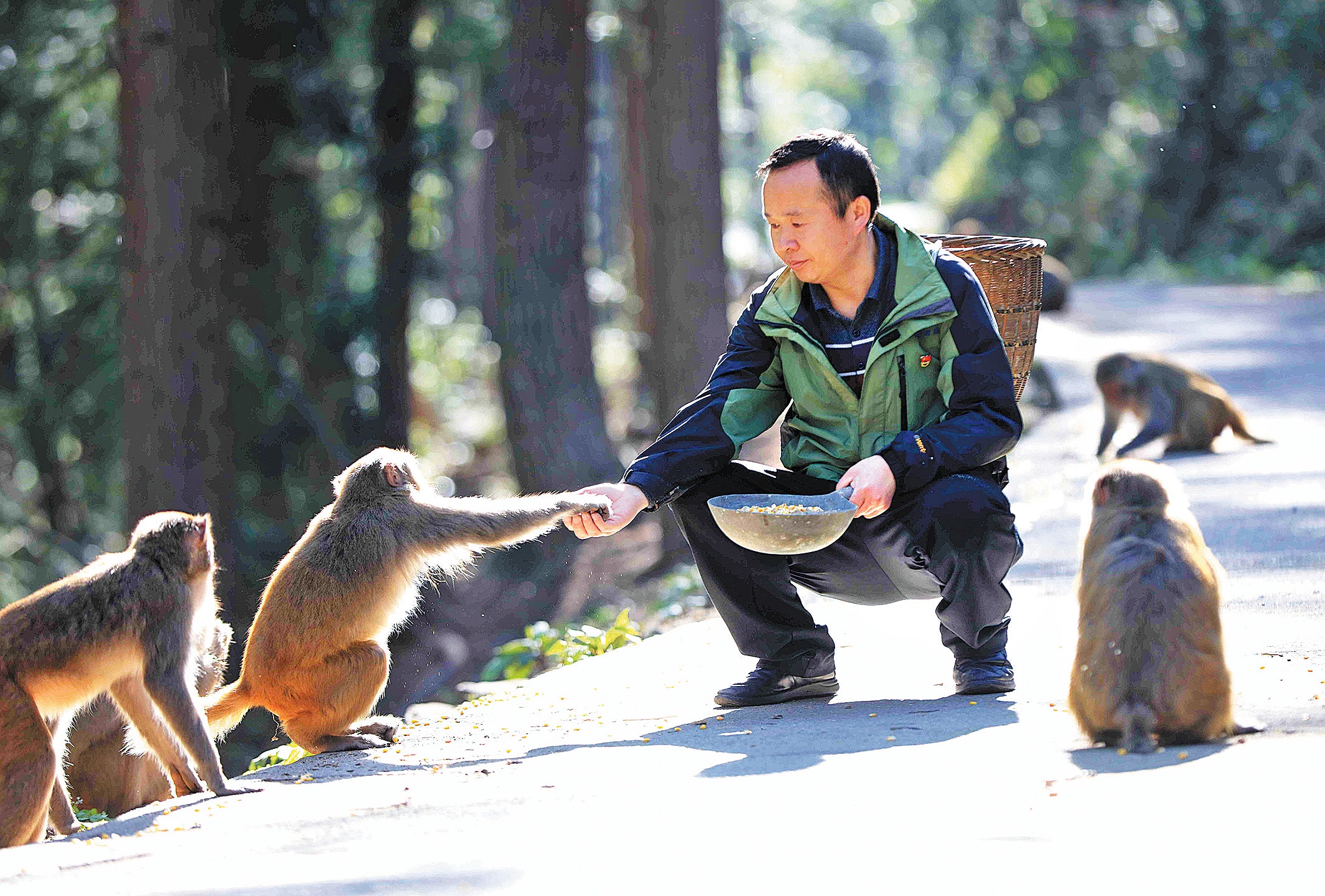Rangers let nature work
THE ARTICLES ON THESE PAGES ARE PRODUCED BY CHINA DAILY, WHICH TAKES SOLE RESPONSIBILITY FOR THE CONTENTS

Having committed himself to the same territory since 1994, 55-year-old Peng Shiwen has become very familiar with the terrain he safeguards.
As a ranger of the Zhangjiajie forest farm in Hunan province, his daily routine includes patrolling the secluded wood-covered mountains and staying vigilant for signs of fire.
“After all these years, I’ve grown accustomed to my simple life in the forest farm and formed a deep emotional connection with it. I consider the forest ranger station as my home and green mountains and woods as my companions,” he said.
Peng recalls that in the past, he had to communicate with other rangers with a walkie-talkie or face-to-face, but nowadays, thanks to new technology, they’re able to use smartphones and update their patrol trails and work logs in an app.
The forest farm is part of the Wulingyuan Scenic and Historic Interest Area, which was inscribed as a Unesco World Natural Heritage Site in 1992. It meets the criteria for the assessment of outstanding universal value – “containing superlative natural phenomena or areas of exceptional natural beauty and aesthetic importance”.
A spectacular area stretching over 100 square miles, the site is dominated by more than 3,000 narrow sandstone pillars and peaks, many over 650 feet high.
In addition to the striking beauty of the landscape, the region is also noted for the fact that it is home to a number of endangered plant and animal species.
Li Wei, an official from the administrative bureau of Wulingyuan Scenic and Historic Interest Area, said they’re using a forest-fire early warning system, with high-altitude thermal imaging cameras to identify smoke or fire and a 24/7 control centre to respond quickly to any emergencies.
To protect against pine wilt disease, they regularly clear dead pine trees to eliminate the threat of the epidemic.
“Each forest ranger is in charge of patrols of a specific region. The tradition of forest protection has been passed down through the generations. Our careful protection has achieved positive results, with good quality water and air, and conservation of wild flora and fauna,” Li said.
Between 1999 and 2001, Wulingyuan initiated two large-scale ecological migration and relocation projects, moving residents from the core scenic area and demolishing a total of 2.5 million square feet of buildings and structures.
In May 2017, the local government issued an announcement for the third project, which is still ongoing, involving 3,087 residents and two million square feet of housing.

“Wulingyuan has attached great importance to heritage conservation,’’ said Hu Xinhua, former director of the protection office of Wulingyuan World Natural Heritage property. “We’ve demolished buildings in the scenic area that violated the regulations or had a negative impact on the intrinsic value of natural heritage.”
The government has also relocated noncompliant reception facilities out of the core scenic area, as well as the people involved. If there are construction projects, all building materials must be approved before entering the core region, Hu said.
The International Union for Conservation of Nature’s World Heritage Outlook assessed Wulingyuan as of “significant concern” in 2014, noting that its outstanding universal value was threatened by the development of tourism facilities, roads, and increased visitation.
Since then, Wulingyuan started to put more efforts into prioritising preservation, and in 2020, the IUCN World Heritage Outlook assessed it as “good with some concerns”.
Xiao Shizhen, professor at the School of Geography and Environmental Science, Guizhou Normal University, said that Wulingyuan’s protection is an evolving process and it now embraces the idea of focusing on conservation and sustainable development.
“Now management is highly effective and continues to see improvement. The awareness of protection has been elevated greatly among all the teams, including local government and managing authorities. We see that the heritage value of Wulingyuan is well-preserved, with its integrity well-maintained,” Xiao said.

Bookmark popover
Removed from bookmarks